
Unveiling Ancient Treasures at the Gregorian Etruscan Museum
Discover the profound legacy of the Etruscans at the Gregorian Etruscan Museum, where ancient artifacts tell the story of a remarkable civilization.
Nestled within the Vatican Museums, the Gregorian Etruscan Museum invites tourists to explore the rich heritage of Etruscan civilization through its extensive collection of artifacts, sculptures, and art. A treasure trove of history awaits your discovery.
A brief summary to Gregorian Etruscan Museum
- WF43+GP2 Unnamed Road, Vatican City, 00120, VA
- Visit website
Local tips
- Visit early in the morning to avoid larger crowds and have a more intimate experience with the exhibits.
- Consider booking a guided tour for deeper insights into the Etruscan artifacts and their historical context.
- Allocate sufficient time to fully explore the museum, as it houses extensive collections that deserve attention.
- Photography may be restricted in certain areas, so check the museum's policies before your visit.
- Take advantage of the museum's proximity to other Vatican attractions for a full day of exploration.
Getting There
-
Metro
If you are near a metro station, take Line A (the orange line) towards Battistini. Get off at the Ottaviano-San Pietro station. After exiting the metro, walk towards the Vatican City. Follow the signs to St. Peter's Basilica. Once you reach the Basilica, continue walking straight, and you will find the entrance to the Vatican Museums, which includes the Gregorian Etruscan Museum.
-
Bus
You can take bus number 40 or 64 from various points in Rome. Both buses head towards the Vatican area. Get off at the stop 'Rondella' or 'Piazza San Pietro'. From there, walk towards St. Peter's Basilica, and follow the signs to the Vatican Museums. The Gregorian Etruscan Museum is located within the Vatican Museums.
-
Walking
If you are already in central Rome, you can walk to the Vatican City. From Piazza Navona, head towards Via del Governo Vecchio, then take a right onto Via di Santa Maria dell'Anima, followed by a left onto Via della Conciliazione. Continue straight until you reach St. Peter's Basilica. From St. Peter's, follow the signs to the Vatican Museums, where the Gregorian Etruscan Museum is located.
-
Taxi or Ride-Sharing
For a more direct option, you can take a taxi or use a ride-sharing app (like Uber) to get to the Vatican Museums. Simply enter 'Vatican Museums' as your destination. The driver will take you right to the entrance, making it easy to access the Gregorian Etruscan Museum.
Discover more about Gregorian Etruscan Museum
Iconic landmarks you can’t miss
CASSA ONLINE E GRUPPI
0.1 km
Discover the historical and cultural essence of Vatican City at CASSA ONLINE E GRUPPI, a key tourist attraction rich in art and spirituality.

Sphere Within Sphere
0.1 km
Discover the captivating Sphere Within Sphere by Arnaldo Pomodoro in Vatican City, a masterpiece that blends modern artistry with profound symbolism.

Caffè Vaticano
0.1 km
Experience authentic Italian coffee at Caffè Vaticano, your cozy espresso bar near Vatican City, perfect for a refreshing break during your explorations.

Ticket for vatican
0.1 km
Experience the heart of Catholicism and explore the artistic treasures of Vatican City with expert guidance and ticket access.

Touristation Vaticano
0.2 km
Discover the artistic and historical treasures of Vatican City with expert-guided tours from Touristation Vaticano, your gateway to unforgettable experiences.

Unmissable attractions to see
Gregorian Egyptian Museum
0.0 km
Explore the breathtaking artifacts of ancient Egypt at the Gregorian Egyptian Museum, a must-see destination in Vatican City.

Biga Room
0.0 km
Explore the Biga Room in Vatican City, a stunning museum filled with exquisite sculptures and rich artistic heritage.

Pio-Clementine Museum
0.0 km
Explore the Pio-Clementine Museum in Vatican City, home to exquisite ancient sculptures and the rich legacy of classical art.

Sala degli Animali
0.0 km
Experience the captivating artistry of the Sala degli Animali, a hidden gem in Vatican City showcasing exquisite animal sculptures and rich cultural heritage.

Sala Rotonda
0.0 km
Explore the enchanting Sala Rotonda in Vatican City, a serene haven of art and history within the renowned Vatican Museums.

Cortile della Pinacoteca
0.1 km
Explore the serene Cortile della Pinacoteca, a stunning courtyard in Vatican City showcasing exquisite art and architectural beauty.

Octagonal Courtyard
0.1 km
Discover the exquisite Octagonal Courtyard, a historical landmark in Vatican City, showcasing stunning art and architecture in a serene setting.

Vatican Museums
0.1 km
Explore the Vatican Museums, a treasure trove of art and history featuring masterpieces like the Sistine Chapel and Raphael Rooms.

Galleria dei Candelabri
0.1 km
Explore the Galleria dei Candelabri: A treasure trove of art and history within the Vatican Museums, showcasing exquisite candelabra and ancient artifacts.

Pine Courtyard
0.1 km
Discover the serene Pine Courtyard in Vatican City, a tranquil garden that harmonizes nature with the grandeur of historical architecture.

Scala Elicoidale Momo
0.1 km
Experience the breathtaking beauty of the Scala Elicoidale Momo, a spiral staircase that embodies architectural elegance in the heart of Vatican City.

Chiaramonti Museum
0.1 km
Explore the Chiaramonti Museum in Vatican City, home to an exquisite collection of ancient sculptures and masterpieces that celebrate classical art.

Braccio Nuovo
0.1 km
Explore Braccio Nuovo in Vatican City: A captivating gallery of classical art and sculptures within the renowned Vatican Museums.

Missionary Ethnological Museum
0.1 km
Explore the Missionary Ethnological Museum in Vatican City, a treasure trove of global cultures, traditions, and histories waiting to be discovered.

Museo Gregoriano Profano
0.1 km
Explore the Museo Gregoriano Profano in Vatican City, home to stunning ancient artifacts and a rich tapestry of history and culture.

Essential places to dine
Pinecone Bistro
0.1 km
Discover authentic Italian flavors at Pinecone Bistro in Vatican City – where culinary charm meets historical wonder.

Caffetteria Centrale
0.1 km
Discover authentic Italian cuisine at Caffetteria Centrale inside Vatican Museums - perfect for tourists seeking delicious food and relaxation.

Ristorante Da Paolo
0.1 km
Discover Ristorante Da Paolo: A top-notch restaurant near Vatican City serving exquisite Italian cuisine and delectable pizza.
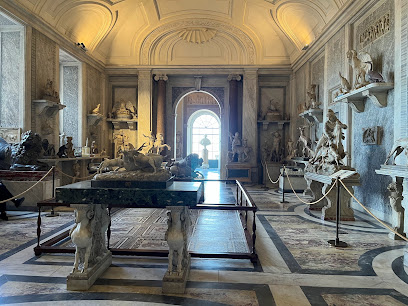
Cafe Viale
0.1 km
Experience authentic Italian flavors at Cafe Viale in Rome - where tradition meets comfort in every bite.

Giuly's Café
0.1 km
Experience authentic Italian cuisine at Giuly's Café in Rome – where every bite tells a story.

Ristorante dei Musei
0.2 km
Discover authentic Italian flavors at Ristorante dei Musei near Vatican City – a must-visit for pizza lovers.

Ristorante L'Angolo Divino al Vaticano
0.2 km
Experience authentic Italian cuisine at Ristorante L'Angolo Divino al Vaticano—just steps from Vatican City.

Francesco 1° Ristorante
0.2 km
Experience authentic Italian flavors at Francesco 1° Ristorante in Rome – where every dish tells a story.

Musè Bar e Restaurant Roma
0.2 km
Experience authentic Italian cuisine at Musè Bar e Restaurant Roma - where tradition meets modern culinary art.

Rist Musei Vaticani - Vinsanto Vino & Cucina
0.2 km
Experience authentic Italian cuisine at Vinsanto Vino & Cucina in Rome—where every dish tells a story.

La Locanda di Pietro
0.2 km
Experience authentic Italian cuisine at La Locanda di Pietro in Rome – where traditional flavors meet modern comfort.

Trattoria Pizzeria Gli Archi
0.2 km
Experience authentic Italian cuisine at Trattoria Pizzeria Gli Archi, where delicious pizzas and traditional dishes await in the heart of Rome.

Le Grotte Prati
0.2 km
Discover Le Grotte Prati: A Seafood Haven in Rome Offering Fresh Flavors and Authentic Italian Cuisine.

Vinsanto Vino & Cucina
0.2 km
Discover authentic Italian flavors at Vinsanto Vino & Cucina, a must-visit restaurant near Vatican City offering exquisite dishes and fine wines.

EXPRESSODRG
0.2 km
Discover authentic Italian flavors at EXPRESSODRG, a delightful cafe blending cafe culture with bar & grill charm in the heart of Rome.
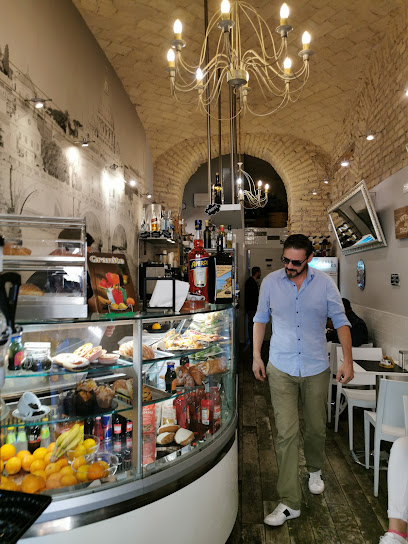
Markets, malls and hidden boutiques
Old Bridge Gelateria
0.2 km
Experience authentic Italian gelato at Old Bridge Gelateria, where every scoop is a treat for the senses, located near the Vatican in beautiful Rome.

Appuntamento visita
0.2 km
Discover unique Roman crafts and local delicacies at Appuntamento Visita, a charming general store offering a taste of Italy's rich culture.

souvenir shop
0.2 km
Explore a delightful souvenir shop in Rome featuring unique gifts and handcrafted items that embody the spirit of Italy.

Caffè Delle Commari
0.2 km
Caffè Delle Commari: Experience the authentic taste of Italy with exquisite coffee, dishes, and cocktails in a charming Roman setting.
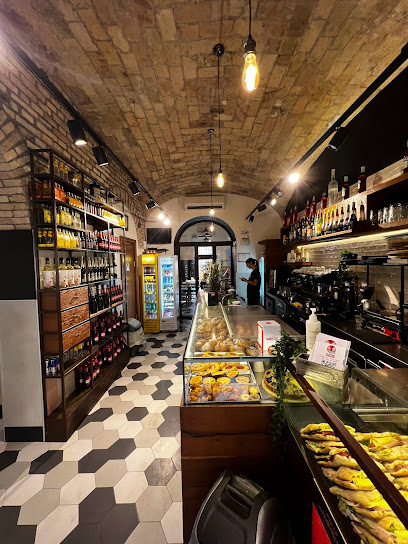
Pergamino Caffè
0.2 km
Discover the warmth and charm of Pergamino Caffè, a delightful coffee shop in Rome serving exceptional brews and pastries in a cozy atmosphere.

La Maison - Idee di Casa Roma
0.2 km
Explore La Maison - Idee di Casa in Rome for unique gifts and stylish home goods that embody the charm and artistry of Italy.

Vatican Supermart
0.2 km
Discover the convenience of Vatican Supermart, your go-to spot for essentials, snacks, and local treasures near Vatican City.

Gallery of Maps
0.2 km
Discover the artistic treasure of the Gallery of Maps in Vatican City, where history and artistry converge in stunning frescoes and intricate cartography.

Vatican Pharmacy
0.2 km
Discover the Vatican Pharmacy, a historic destination for health products in the heart of Vatican City, blending tradition and wellness.

Shopping Casa
0.2 km
Explore Shopping Casa, a unique home goods store in Rome, offering exquisite Italian decor and gifts that capture the essence of local craftsmanship.

Soliani Roma
0.2 km
Discover the finest leather goods and unique designs at Soliani Roma, a must-visit destination for fashion lovers in the heart of Rome.

Soliani
0.2 km
Explore Soliani, a stylish bag shop in Rome offering exquisite Italian craftsmanship and a unique selection for every traveler.

Annona Vatican City
0.3 km
Discover the culinary treasures of Vatican City at Annona, your go-to grocery store for fresh produce and local delicacies.

Intimissimi
0.3 km
Explore Intimissimi in Rome for exquisite women's lingerie and clothing that perfectly balance elegance and comfort, showcasing the best of Italian fashion.

LUGGAGE STORAGE -VATICAN CITY MUSEUM /TECH POINT ROMA
0.3 km
Secure your luggage and find unique souvenirs at the Vatican City Museum's charming gift shop, perfect for tourists exploring the wonders of Rome.

Essential bars & hidden hideouts
Fe.ma.
0.1 km
Discover the cozy charm of Fe.ma., a hidden gem bar in Rome, offering a delightful mix of local drinks and a welcoming atmosphere.
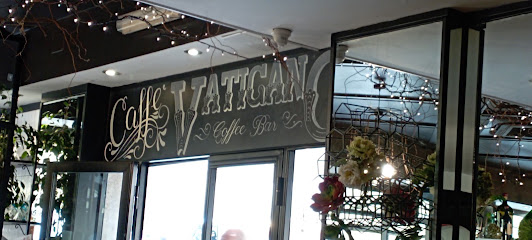
Terrazza 1919
0.1 km
Experience breathtaking views of Vatican City with exquisite cocktails at Terrazza 1919, Rome's premier rooftop bar.

Birreria Martini Esperienza Tedesca
0.2 km
Discover the vibrant German beer hall experience at Birreria Martini in Rome, where authentic cuisine meets a lively atmosphere.
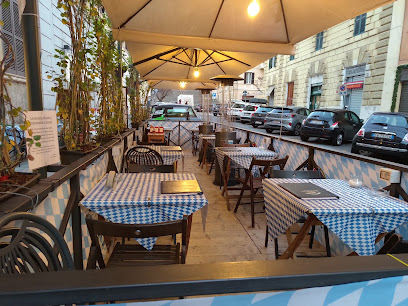
Be.Re. + Trapizzino
0.2 km
Discover the taste of Rome at Be.Re. + Trapizzino, a gastropub offering innovative Italian street food and a cozy atmosphere near the Vatican.

Osteria delle Commari
0.2 km
Savor the authentic flavors of Italy at Osteria delle Commari, a charming restaurant near Vatican City offering exquisite Mediterranean cuisine.

Chill
0.2 km
Experience the relaxed ambiance of Chill, a cozy bar in the heart of Rome, perfect for unwinding after a day of exploring the Eternal City.

Forno Feliziani
0.2 km
Discover Rome's authentic pizza experience at Forno Feliziani, where every slice brings the taste of Italy to your plate.

Il Segreto - Italian restaurant near the Vatican
0.2 km
Experience authentic Italian cuisine at Il Segreto, a charming restaurant near the Vatican, perfect for travelers seeking delicious flavors.

Saxophone Live Pub
0.2 km
Experience the heart of Rome's nightlife at Saxophone Live Pub, where live music and vibrant atmosphere create unforgettable memories.




